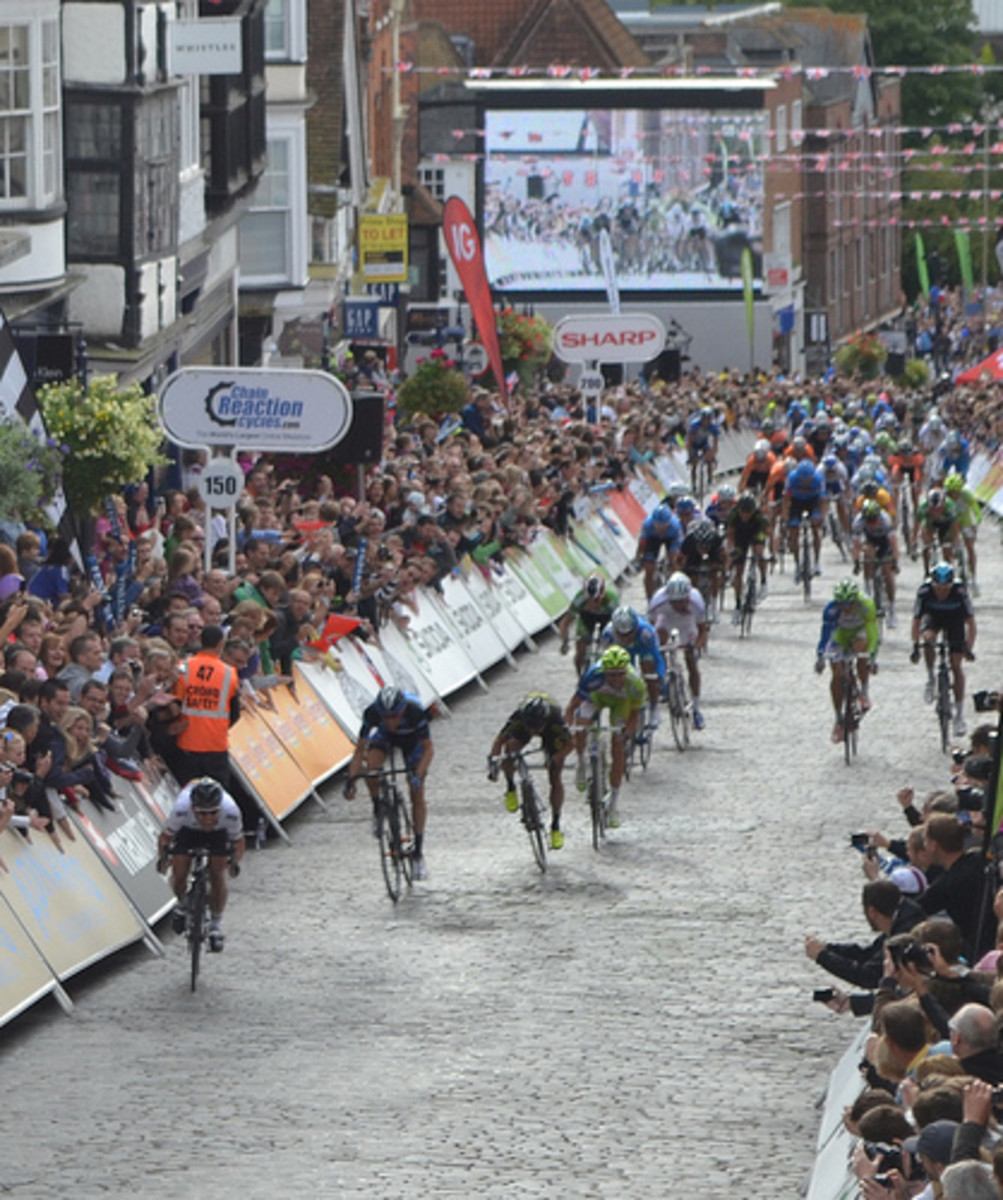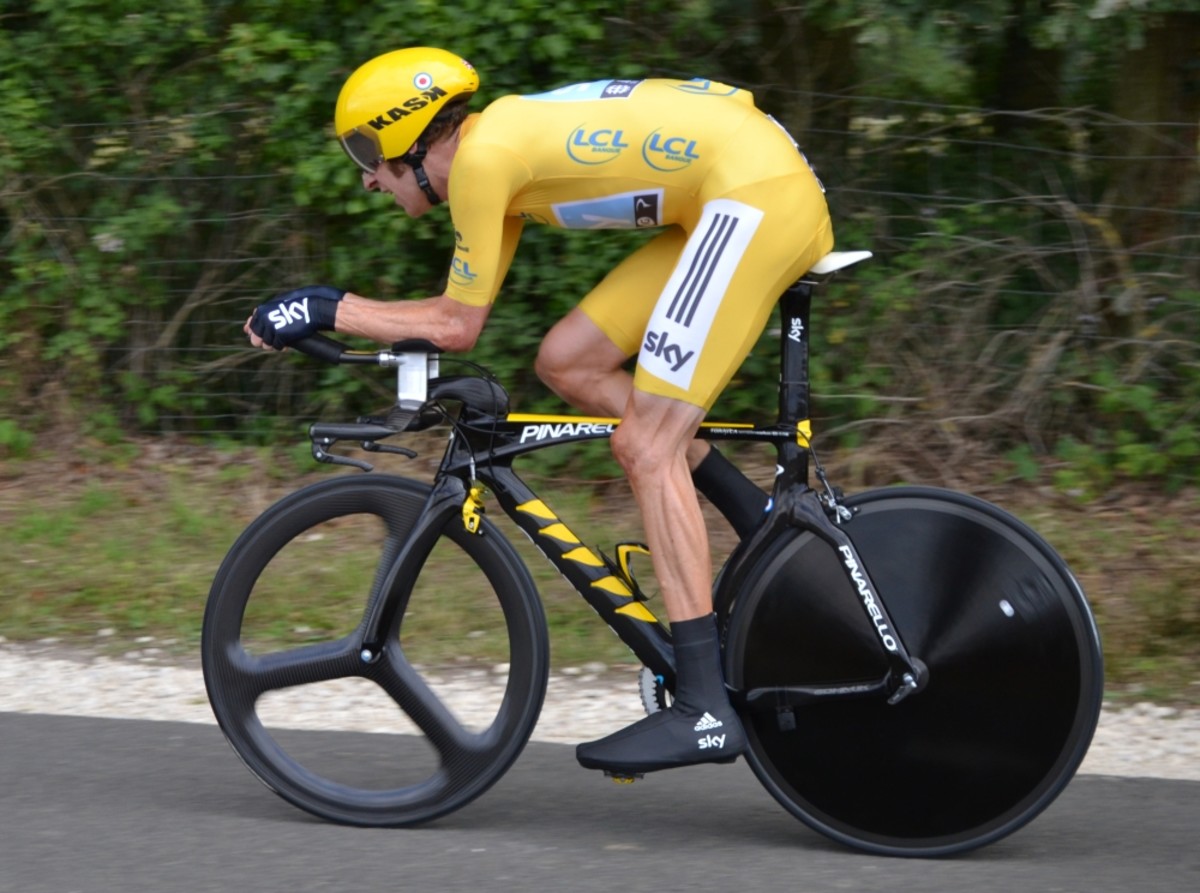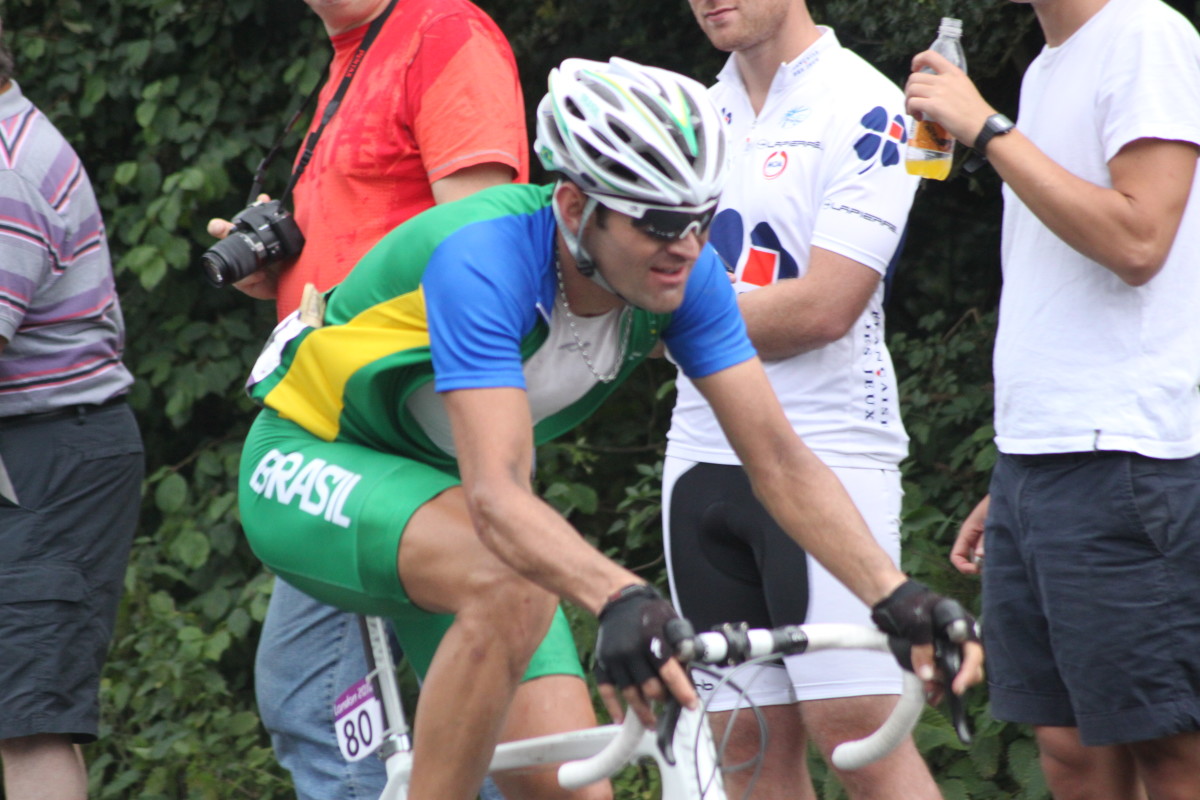Tour de France Leaders Jersey Meanings And History
A guide to the leaders jerseys in the Tour de France
To many people the Tour De France is the pinnacle of the professional cycling calendar. It is arguably the biggest spectator event in world sport with millions of fans lining the roads throughout France and whichever countries through which the event passes: from cobblestones to remote and exhaustingly high Mountain Passes.
To the uninitiated the nuances and culture within professional cycling as a sport can be baffling so here's a guide to the leaders jerseys seen at Le Tour with an insight into their historical significance.
The Tour de France In Paris
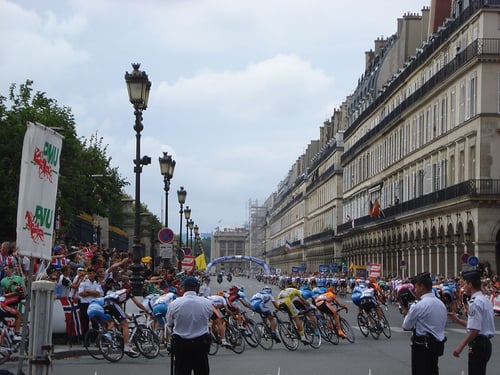
Tour De France leaders jerseys explained
In the 2013 edition of the Tour de France you will see four leaders jerseys change hands
- The Yellow Jersey (General classification)
- The Polka-Dot Jersey (King of the Mountains)
- The Green Jersey (Sprinters points jersey)
- The White Jersey (Young rider classification)
Below gives a historical account of the inception of each jersey and it's inclusion within the Tour de France.
The inception of the Tour de France
It's hard to imagine but the Tour de France was actually dreamt up as a marketing idea to promote the French magazine L'Auto back in 1903.
The origin of the Tour de France dates back to the Dreyfuss Affair in Northern France in the late 1800 which was a great divider of opinion. Alfred Dreyfuss was a soldier who was convicted, and the acquitted of selling French military secrets to the German's. The main sporting newspaper at the time was Le Velo, although their one-sided reportage and belief of Dreyfuss' innocence led to the formation of L'Auto as a rival.
L'Auto appointed as Editor Henri Desgrange, a published writer on cycling and part owner in the Parc des Princes velodrome although the paper was not the success its backers had hoped and in 1902 a crisis meeting was called to look at ways to increase publicity and sales.
The idea for a cycle race travelling around France came from Géo Lefèvre, the chief cycling correspondent for L'Auto. He suggested a six day race around France and so the idea of the Tour De France developed and led to the first race in 1903 which was won by Frenchman Maurice Garin who didn't wear a leader’s jersey. Garin wore a green armband which denoted that he was the leader on the road.
The yellow jersey in the Tour de France
The most prominent leader’s jersey in the Tour de France is the yellow jersey. (Often known as le maillot jaune in French). The yellow jersey is awarded to the leader rider of the Tour on time. It is awarded based on a calculation of the combined racing time of the individual rider on general classification.
To have a rider in the yellow jersey can open up a variety of complexities for any team. It is traditionally regarded that that will work at the front of the peloton towards keeping the yellow jersey for the team.
The main prize of winning the Tour de France involves a rider being in the yellow jersey on arrival on the Champs Elysees in Paris on the last day of the race. To win the yellow jersey a rider must possess a combination of abilities in climbing, time trialling and have not suffered the misfortune of punctures and crashes within the bunch at the wrong times.
The yellow jersey denotes the leader on general classification
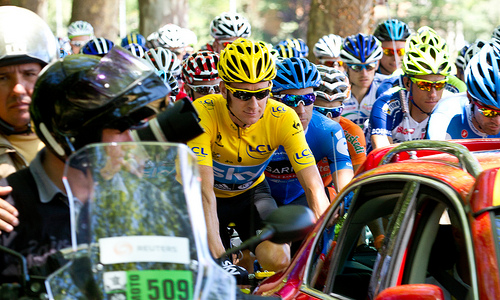
The history of the yellow jersey in the Tour de France
There is some dispute regarding exactly when the first yellow jersey was worn in the Tour de France. Official records show that it was first awarded to Eugène Christophe in the stage from Grenoble to Geneva on July 18, 1919.
Desgrange wrote in the 1919 edition of L'Auto
"The man leading the race [de tête du classement général] should wear a jersey in the colours of L'Auto. The battle to wear this jersey is going to be passionate"
The irony was that Christophe is noted to have been displeased of the effect the jersey had towards spectators teasing that he looked like a canary. This was compounded by his nickname Cri-Cri which is French baby-talk for a bird.
The first yellow jersey wearer? Philippe Thys
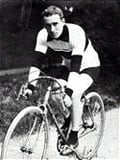
Controversy over the first yellow jersey at the Tour.
While there is no official reports that there was a yellow jersey awarded before the First World War there are anecdotal reports from a Belgian rider Philippe Thys was offered a yellow jersey as leader back in 1913. Thys has been quoted that he refused the jersey as he thought the colour would make him stand out in the peloton and therefore mark him a marked man in the bunch although Thys subsequently is noted to have agreed to wear a year jersey after conversations with Henri Desgrange[1] and his Peugeot team manager Alphonse Baugé who believed it would be a great advertisement for the company.
Respected Tour de France historian Jacques Augendre has previously noted that Thys was a well respected rider who was noted for his intelligence and therefore it is hard to discount the accounts that a yellow jersey was awarded back in 1913[2].
Michael Rasmussen climbing in the yellow jersey before his omission from the Tour
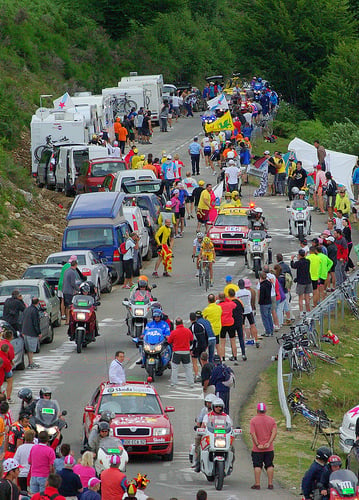
Further controversy in the yellow jersey- Michael Rasmussen in 2007
During the 2007 Tour de France the Danish rider Michael Rasmussen was leading the race; however had his team contract terminated during the race for lying about his whereabouts for a missed doping control. Rasmussen had taken over the yellow jersey after winning a mountainous stage in the Alps between Le Grand Bornand and the ski resort of Tignes however with just a few days left till the finish in Paris he was sacked by his Rabobank team for violating team principles as a retired cyclist Davide Cassanni had reportedly seen Rasmussen training in Italy during the June of 2007 when he had reported he had been training at altitude in Mexico.
Rasmussen subsequently served a two year ban which he challenged in the Court of Arbitration for Sport but was upheld.
On 31 January 2013, Rasmussen admitted to using performance-enhancing drugs (PED's) between 1998 and 2010. He admitted to having used a broad selection of PED's (Including Cortisone, EPO, growth hormone and testosterone, as well as having used blood transfusions).
The polka dot jersey is for the leader of the mountains classification
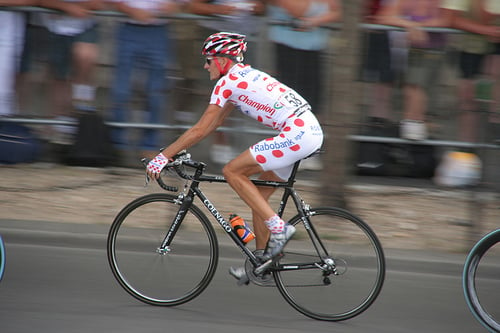
The polka-dot jersey in the Tour de France
One of the most standout jerseys you will see at the Tour is the polka dot jersey. The jersey features large reds dots on a white background. The iconic "red peas" colour-scheme was initiated by Poulain Chocolate to match one of their products as part of a sponsorship deal in 1975.
The polka dot jersey is awarded based on accumulated points allocated at the top of major climbs along the race route. Climbs can range from fourth category climbs which may not pose a significant challenge to the riders. Climbs are categorised based on their steepness and Third category climbs start to get more challenging, second category even more so. First category climbs include some of the high passes of the Alps and Pyrenees and the most challenging climbs of the race are classified as "Hors categorie". (Outside categorization).
A twist in the tale was added in 2004 with the stipulation that the KOM points scored double on the final climb of the day if it is categorized as second category or higher. This gave much more prominence to riders who spent significant time in breakaways and riders high up the general classification performing well in the mountains.
A history of the polka dot jersey in the Tour de France
While L'Auto started to acknowledge the best climber of the Tour de France (meilleur grimpeur) from 1903 onwards however the mountain passes and climbs did not gain significance within the general classification battle for the yellow jersey until 1934 where a time bonus was offered for the first rider over the top of a major climb.
The iconic polka-dot jersey for the best climber classification was introduced in 1975 and the colour-scheme resembled that of the sponsor Chocolat Poulain, whose chocolate bars featured white wrappers with red spots. Carrefour supermarkets currently sponsor the jersey and have done so since 1993 under both their Champion and Carrefour brands.
Despite the prominence of performing well in the mountains on the overall classification, over recent years the classification become a specialism almost in its own right and there are arguments made that the jersey has been somewhat de-valued as it often is won by riders with limited chance of challenging in the general classification battle and are subsequently allowed to escape the peloton to gather points in breakaways.
Richard Virenque in the polka-dot jersey at the 1995 Tour
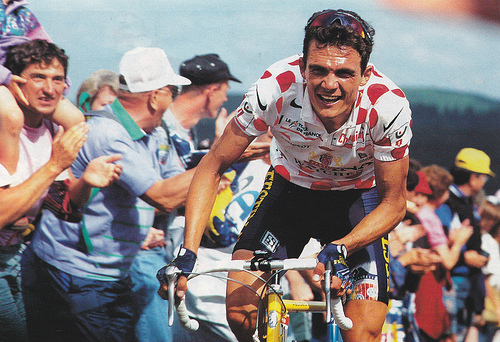
Which rider has won the polka dot jersey the most times?
The rider to have won the polka dot jersey mountains classification the most times is Frenchman Richard Virenque. He won the classification in 1994, 1995, 1996, 1997, 1999, 2003 and 2004 for a total of seven wins.
Virenque is closely followed by Federico Bahamontes and Lucien Van Impe who won the classification six times each.
The green jersey
The green jersey is the domain of the sprinters. In French it is known as the maillot vert. Green jersey points are awarded at sprint points throughout the race route and at the end of each stage.
The green jersey point’s classification award was implemented to celebrate the 50th anniversary of the Tour de France in 1953. The colour green was implemented as the first sponsors were a lawn mower company although the jersey changed temporarily to red in 1968 to please a sponsor.
The green jersey is currently sponsored by French state-owned betting company PMU.
The jersey the sprinters want to win. The green jersey
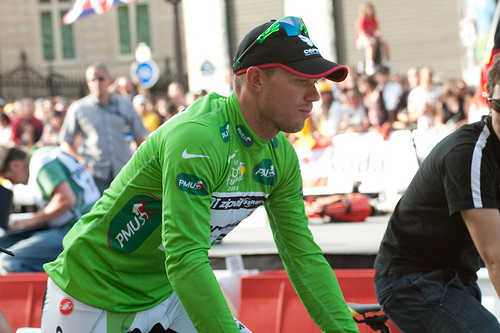
A history of the green jersey points classification in the Tour de France
Since its inception in 1953 for the 50th anniversary of the Tour de France the green jersey has become synonymous as being the 'sprinters jersey'. However to be successful in the competition a degree of all-round fitness and racing abilities are required as the rider has to physically drag themselves over the high passes of the Alps and Pyrenees inside the allotted time limits whilst managing their levels of fatigue throughout the course of a 3-week Grand Tour.
Initially the green jersey was awarded based on a rider continuously finishing high up the field. Penalty points were awarded based on how far down the field the rider finished and the winner of the classification was the man who had accumulated the fewest points at the end of the race.
The first rider ever to wear the green jersey in the Tour de France was Dutchman Wout Wagtmans although the first rider to win the competition outright was the Swiss all-rounder Fritz Schär.
Green jersey points allocations per stage- 2013
Position
| Flat Stage
| Medium Mountain Stage
| High Mountain Stage
| Time Trial Stage
| Intermediate Sprint
|
|---|---|---|---|---|---|
1
| 45
| 30
| 20
| 20
| 20
|
2
| 35
| 25
| 17
| 17
| 17
|
3
| 30
| 19
| 15
| 15
| 15
|
4
| 26
| 17
| 13
| 13
| 13
|
5
| 22
| 15
| 11
| 11
| 11
|
6
| 20
| 13
| 10
| 10
| 10
|
7
| 18
| 11
| 9
| 9
| 9
|
8
| 16
| 9
| 8
| 8
| 8
|
9
| 14
| 7
| 7
| 7
| 7
|
10
| 12
| 6
| 6
| 6
| 6
|
11
| 10
| 5
| 5
| 5
| 5
|
12
| 8
| 4
| 4
| 4
| 4
|
13
| 6
| 3
| 3
| 3
| 3
|
14
| 4
| 2
| 2
| 2
| 2
|
15
| 2
| 1
| 1
| 1
| 1
|
Green jersey points for the 2013 Tour de France. If it cannot be determined that there is a gap between riders the total points on offer for the two places will be added together and halved.
The white jersey at the Tour de France
The white jersey is awarded to the best young rider. The maillot blanc is awarded to the best-placed rider on general classification under 26 years of age.
The rules for classification have differed over the years but have always been in place to favour the less experienced riders. The white jersey is usually based on age, although it has also been issued to riders based on their first Tour de France or cyclists who have been in their first two years as a professional racer.
The white jersey is for the best young rider
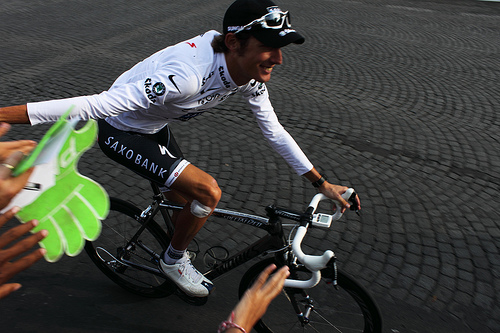
A history of the white jersey
The white jersey was originally implemented in 1968 as a combination classification jersey which focused on a rider’s performance in the overall classification as well their standings in the points and mountains competitions although its awarding factors have changed greatly since its inception.
Officially the white jersey has been awarded as the young rider award in the Tour de France since 1975 where it was initially awarded to any neo-professional (less than three years as a pro). The best younger rider classification at the Tour was first won by Italian Francesco Moser.
The awarding was changed in 1983 to reward riders for whom it was their first ever Tour de France participation. From 1987 the award changed again to reflect the achievements of riders who were aged less than 26 years on January 1st of the year of the Tour.
The white jersey classification no longer existed between 1989 and 1999.
The white jersey was re-introduced for the 2000 Tour and is now named the Souvenir Fabio Casartelli after an Italian rider who tragically lost his life on the Pyrenean descent of the Col de Portet d'Aspet in the 1995 Tour.
Since it's inclusion in the Tour six riders have gone on from winning the white jersey to the yellow jersey classification: Laurent Fignon (FRA), Greg LeMond (USA), Marco Pantani (ITA), Jan Ullrich (GER), Alberto Contador (ESP) and Andy Schleck (Lux).
References
2. Augendre, Jacques: Tour de France, panorama d'un siècle, Soc. du Tour de France, 1996

